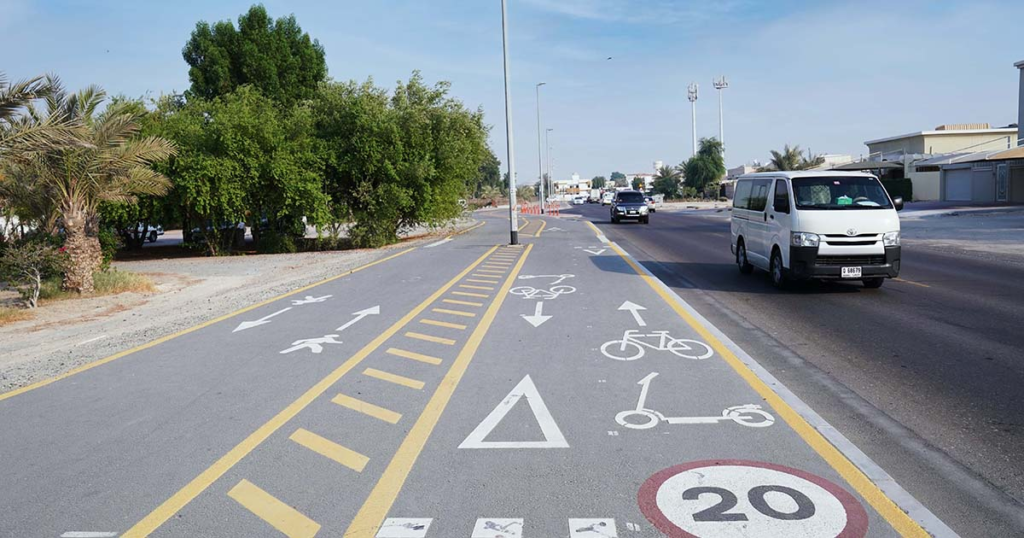Dubai Roads and Transport Authority (RTA) has launched a Dhs696 million project to convert major roundabouts into signalized intersections to reduce traffic congestion. This project, part of Dubai’s Vision 2040, aims to enhance safety and improve commute times, reflecting the city’s goal to become one of the world’s most livable urban spaces.
A Solution for Traffic Congestion
Dubai’s road network has faced increasing demand due to rapid growth in tourism, business, and residential development. With more people and vehicles on the road, the RTA’s latest project is timely. These roundabout changes will add traffic lights and smart tech, improving flow on key roads like Sheikh Rashid bin Saeed Street and Dubai-Al Ain Road.
The purpose of this transformation is straightforward: create an easier, more reliable daily commute. By replacing roundabouts with well-timed traffic signals, each junction can manage higher vehicle capacities, significantly reducing congestion, especially during rush hours. This project aims to make travel quicker and safer for Dubai residents and visitors.
Key Roads Undergoing the Upgrade
Key intersections targeted by this transformation project include:
- Sheikh Rashid bin Saeed Street: Known for heavy traffic, this road will benefit from increased lane capacity, making it easier for drivers to navigate.
- Dubai-Al Ain Road: A critical link between Dubai and neighboring emirates, the new design will make this route faster and more efficient for commuters.
- Hessa Street: As one of the main access points for residential neighborhoods, the upgrades on Hessa Street aim to improve the flow of traffic and safety for both pedestrians and drivers.
These intersections will increase vehicle throughput, reducing delays for a better driving experience.
What This Means for Commuters
This ambitious roundabout-to-signal transformation project brings a host of benefits for everyday commuters in Dubai. By reducing bottlenecks, the RTA aims for more predictable travel times and smoother flow. The project includes Intelligent Traffic Systems (ITS) to monitor conditions and adjust signals for optimal flow.
The RTA’s project includes dedicated lanes and pathways for public transport users, cyclists, and pedestrians, especially along Hessa Street. Cyclists and pedestrians will benefit from new pathways linking to metro stations, supporting Dubai’s
eco-friendly transportation efforts.

Dubai’s Push Toward a Sustainable Future
Beyond easing congestion, RTA’s project plays a crucial role in Dubai’s green initiatives. The new signalized intersections will reduce vehicle idling, lowering emissions and promoting cleaner air. Additionally, the RTA is working to expand its smart parking systems, helping streamline parking and reduce unnecessary vehicle movement. These efforts reflect Dubai’s commitment to sustainable living as it prepares to host COP28 and showcase its
eco-conscious urban planning.
Future Road Developments in Dubai
This upgrade is part of Dubai’s Vision 2040 plan to modernize transport and expand lanes, bridges, and cycling tracks. Since 2006, Dubai’s road network has doubled, with additional projects underway to further improve traffic capacity and road quality.
Plans are underway to turn Jumeirah Road into an urban boulevard and expand Al Wasl Road to three lanes in each direction. Such upgrades reflect Dubai’s commitment to continuous infrastructure development to keep pace with the city’s growth and evolving transportation needs.
The Road Ahead for Dubai
With a Dhs696 million investment, the RTA is improving road conditions and paving the way for a more accessible, efficient,
and sustainable urban environment. These initiatives reflect Dubai’s dedication to becoming a leading global city in transportation and quality of life.
As the project progresses, the RTA will update on travel changes, detours, and milestones. The transformation promises a smoother journey across Dubai’s roads, marking an exciting new era in the city’s transportation landscape.












Leave a comment